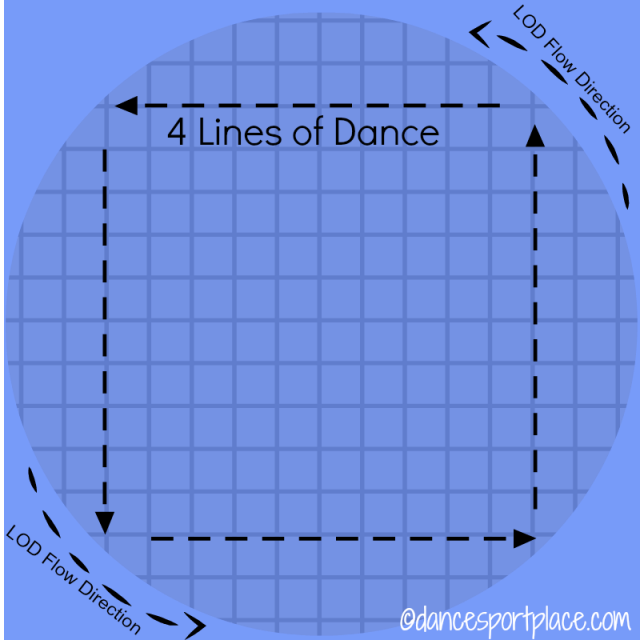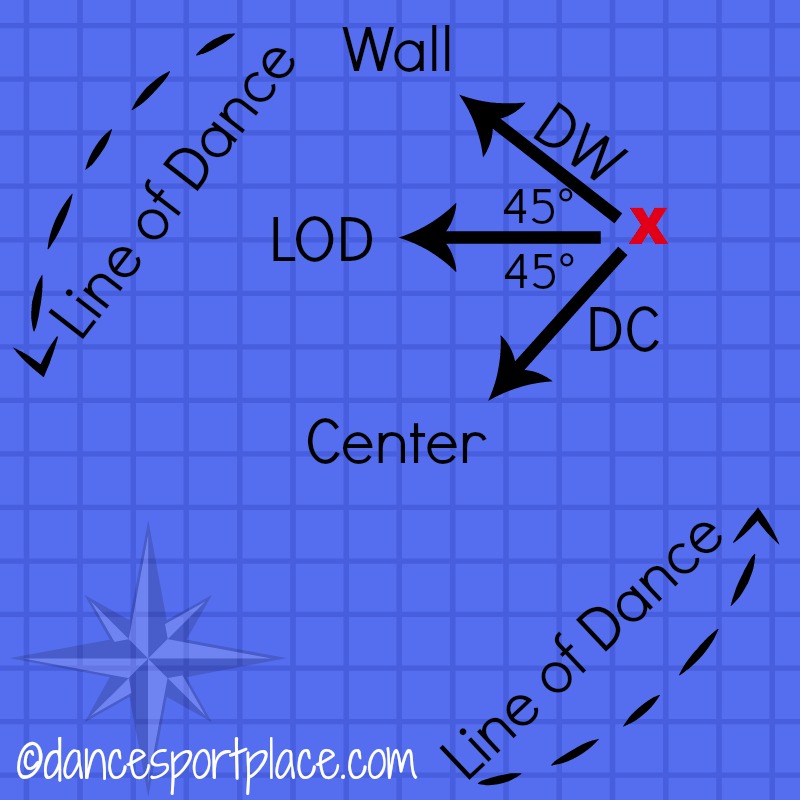Remember the first time you went to the studio for a lesson? You might have been intimidated by other dancers whizzing around the floor. Even after some lessons under your belt, dancing at your first party may have left you feeling totally ruffled. Putting those moves into practice is a lot harder when you’re when maneuvering for position comes into play!
Instead of cruising around the floor with the agility of a sportscar, you may have felt more like the stalled out Ford Pinto. And have you ever watched a competition floor full of dancers and wondered “how the heck do they not run over one another?!” Well, to get moving properly around the floor, you just need a little education in the art of floorcraft.
It goes without saying that all the regular courtesy rules apply to dancing as they do when you’re driving out on the road: let others merge, be considerate of others in “slower” vehicles (i.e. beginners), know where you are going so you don’t hold up traffic. If you are a seasoned dancer, you should be competent enough in your floorcraft that you can successfully avoid couples and beginners without being boorish or intimidating others purposefully.
Everyone was a beginner once, so allow your polished floor negotiating skills to be an example for others to aspire too. That being said, let’s take a look at the basic formulas that get you where you want to go in a graceful manner.

LOD: Line of Dance
In dances that move around the floor, like foxtrot and samba, dancers should be traveling counter clockwise around the floor in the LOD. You can think of the LOD in two ways.
1. Most rudimentarily, as a big circle in which the flow of traffic moves, just like at a skating rink or race car track.
2. As 4 straight lines paralleling the walls of the room. Imagine there a square (or rectangle, depending on the floor shape) inside the LOD circle. The four lines that make up the square or rectangle are the 4 lines of dance. When you get to a corner of the dance floor, by turning the corner, you move onto another LOD.
In order to negotiate around others on the floor, you need to be able to move to either the left or right of the LOD. Certain patterns will flow naturally when aligned to either the left or right of the LOD. Knowing what direction to start, or end, a pattern is called alignment. We will look at just two more of the most common ones, but there are actually 8 alignments.

DW: Diagonal Wall
To practice, stand on the LOD. Turn yourself 45° towards the wall. You are now facing Diagonal Wall. Generally, patterns that turn to the right (natural turns) will start in this alignment.
For example, if you are dancing a natural turn in the waltz (closed right turning box), by starting in this proper alignment (and making the correct amounts of turn), you will be able to travel with the flow of traffic down the LOD.
DC: Diagonal Center
To practice, stand on the LOD. Turn yourself 45° towards the center of the room. You are now facing Diagonal Center. Generally, patterns that turn to the left (reverse turns) will start in this alignment.
For example, if you are dancing a reverse turn in the waltz (closed left turning box), by starting in this proper alignment (and making the correct amounts of turn), you will be able to travel with the flow of traffic down the LOD.
For dances like swing or rumba that generally stay in place, room alignment is not as important.
It may be used for the odd pattern in a stationary dance that does travel down the floor, or if you are competing or doing a show and don’t want to have the audience looking at your back the whole time.
Hey, Ladies!
Many female dancers may think that this whole negotiating alignment thing is best left up to the partner who is driving. However, you will understand your role better when you know where your patterns should begin and end. As the lady, you yourself must know how much movement is required of you to do a particular pattern properly–and this will prevent you from feeling that you are being dragged around the floor.
Map it Out!
Before your first dance, competition or when trying a new step, be sure to ask your teacher or research the alignment of the step. Practice the pattern on your own with the correct alignment. Then you’ll be the one on the floor zooming around with the cool confidence of a Ferrari!
- Write your Dance: Improve your dancing through journaling - November 12, 2019
- The Difference Between Oversway and Throwaway: Ballroom Video Preview - June 8, 2018
- Principles of Movement: Ballroom Basics Video - September 21, 2016

we respect your privacy and will never share your information! Unsubscribe at any time.



